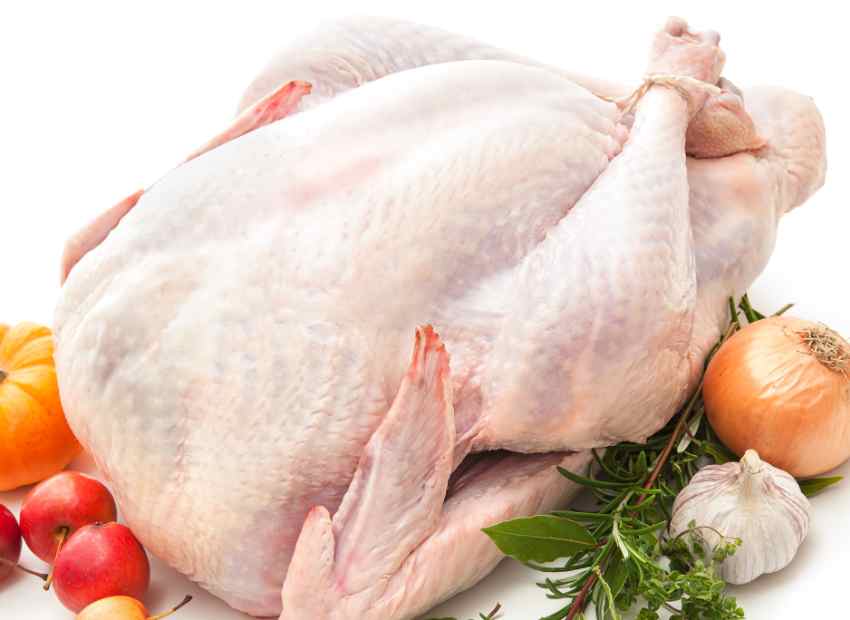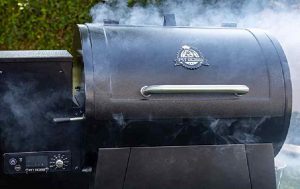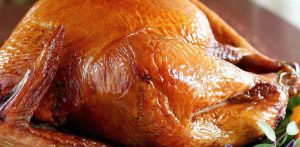Knowing, whether your turkey is fully thawed, is crucial for a successful and delicious meal.
It can take several days to defrost a whole turkey, and factors such as fridge temperature and the bird’s placement can impact the thawing process.
Before you start cooking, make sure to check if your turkey is properly thawed to avoid uneven cooking and extended cooking time.
In this guide, we’ll share some tips on how to determine if your turkey is ready for the oven or smoker, ensuring a tasty and enjoyable meal for everyone.
- The Perfectly Thawed Turkey:
- How to Tell if a Turkey is Thawed?
- Additional Tips for Defrosting a Turkey: The Dos and Don’ts
- Cooking a Partially Frozen Turkey: What You Need to Know
The Perfectly Thawed Turkey:
Thawing a turkey might appear intimidating, but with proper planning and the right approach, it’s quite simple.
Follow these steps to achieve a stress-free, perfectly defrosted turkey:
1. Determine the thawing duration:
As a general guideline, allow 24 hours of thawing in the refrigerator for every 5 pounds of turkey. For instance, a 15-pound bird will require 3 days to thaw.
It’s important not to leave a defrosted turkey in the fridge for more than 1-2 days, as the quality could decline.
2. Refrigerator thawing:
After figuring out the required thawing duration, set a reminder on your phone. When the time comes, remove the turkey from the freezer and place it in the refrigerator.
To catch any dripping juices and prevent cross-contamination, use a pan or disposable container.
3. Check and adapt:
On the day you intend to cook the turkey, ensure it’s completely thawed. If not, there’s no need to panic!
Opt for a cold water bath to expedite the thawing process. Immerse the wrapped turkey in cold water (a sink or cooler is ideal) and replace the water every 30 minutes.
This method requires roughly 30 minutes per pound, so a 12-pound turkey would take about 6 hours to thaw.
Keep in mind that you should begin cooking right after thawing using this method, as refrigeration and refreezing aren’t recommended.
4. Prioritize safety:
When your turkey is thoroughly thawed, keep it in the refrigerator until it’s time to cook.
Refrain from leaving it at room temperature, as this could promote the growth of harmful bacteria. You can find out more about the 2-hour rule at USDA
How to Tell if a Turkey is Thawed?
Preparing a delicious turkey begins with proper thawing. To ensure your turkey is thawed and ready for cooking, follow these simple tips:
Touch and feel:
The most reliable way to check if your turkey is completely thawed is by touch. Unwrap the turkey, remove the neck and giblets, and feel inside the cavity.
The turkey’s legs and wings should move freely, and the breasts should yield to gentle pressure.
Checking a day in advance also allows you to season the turkey and helps speed up the process if it’s still icy.
Use a thermometer:
A probe thermometer is a great tool to confirm your turkey’s thawing status. Check both the breasts and thighs; they should register between 32°F and 40°F, similar to your fridge’s temperature.
Remember to clean the thermometer after using it on the raw turkey.
Check for ice:
The turkey’s cavity may still have icy patches or even a small chunk of ice. If you find any, don’t worry! Run the turkey under cold water to resolve the issue.
Be aware that you’ll need to disinfect your sink and surrounding countertop afterward to prevent the spread of bacteria.
Additional Tips for Defrosting a Turkey: The Dos and Don’ts
Defrosting a turkey can seem tricky, but with these helpful tips, you’ll be well on your way to a perfectly thawed bird:
Avoid warm water:
Though it may be tempting to use warm water to speed up the thawing process, stick to cold water. Warm water can encourage bacterial growth, which can lead to food poisoning.
Clean your thermometer:
After checking the turkey’s temperature during defrosting, always wash the thermometer to avoid cross-contamination when checking for doneness later.
Don’t panic over ice patches:
If you find small ice patches on your otherwise thawed turkey, don’t worry. Run the turkey under cold water to remove the ice, and trust your temperature probe.
Disinfect your workspace:
Be sure to disinfect the sink, cooler, or any other container used for thawing the turkey. Bacteria from raw turkey can linger and contaminate other foods or surfaces.
Avoid microwave defrosting:
While microwaves may seem like a quick solution, they can unevenly defrost your turkey, leading to partially cooked spots. Stick to the cold water method for more reliable results.
Don’t leave the turkey out:
Never leave the turkey at room temperature for more than 2 hours, as this can become a breeding ground for harmful bacteria.
Cooking a Partially Frozen Turkey: What You Need to Know
So, you’ve found your turkey is still partially frozen even after following the thawing process. Don’t worry you can still cook it safely!
Here are the key points to remember when dealing with a partially frozen turkey:
It’s safe to cook:
You can cook all cuts of meat in a frozen or partially frozen state. The oven or smoker’s heat will gradually thaw the turkey as it cooks.
Related >> How To Cook Frozen Steak On The Grill (4 Easy Steps)
Adjust cooking time:
Expect to add an extra 25% to the estimated cooking time for a partially frozen turkey. For example, if your 12-pound turkey typically takes 4 hours to cook, it may now take up to 5 hours.
Consider cold water thawing:
If you discover your turkey is still partially frozen, you may opt to use the cold water thawing method to speed up the defrosting process. This can save time compared to the increased cooking time needed for a partially frozen bird.
Cooking a completely frozen turkey:
If your turkey is completely frozen, it can still be cooked, but it will take up to 50% longer. Keep in mind that this method may result in uneven cooking and potentially affect the meat’s texture.
Related >> Turkey Taking Longer Than Expected (Reasons and Solutions)
Final Thoughts
With this guide in hand, you can confidently tackle the thawing process for your turkey.
Just remember to calculate your thawing time, monitor the progress, and follow the defrosting tips we’ve shared. Your perfectly thawed turkey will be the talk of the table!
>> Visit our extensive BBQ guides page for more articles that are similar to this one.
Greetings! I’m Chad, a 43-year-old barbecue aficionado hailing from the beautiful state of Texas. I’m thrilled to invite you on a culinary journey as we explore the art of grilling and smoking together. Through this blog, I aim to ignite your passion for barbecue by offering:
Scrumptious, time-honored BBQ recipes passed down through generations, guaranteed to tantalize your taste buds.
Expert guidance on mastering the grill, smoker, and diverse cooking techniques to elevate your barbecue game.
Recommendations on choosing the perfect tools and equipment tailored to your grilling requirements.
An inside look at the latest trends, innovations, and advancements in the ever-evolving world of barbecue.





